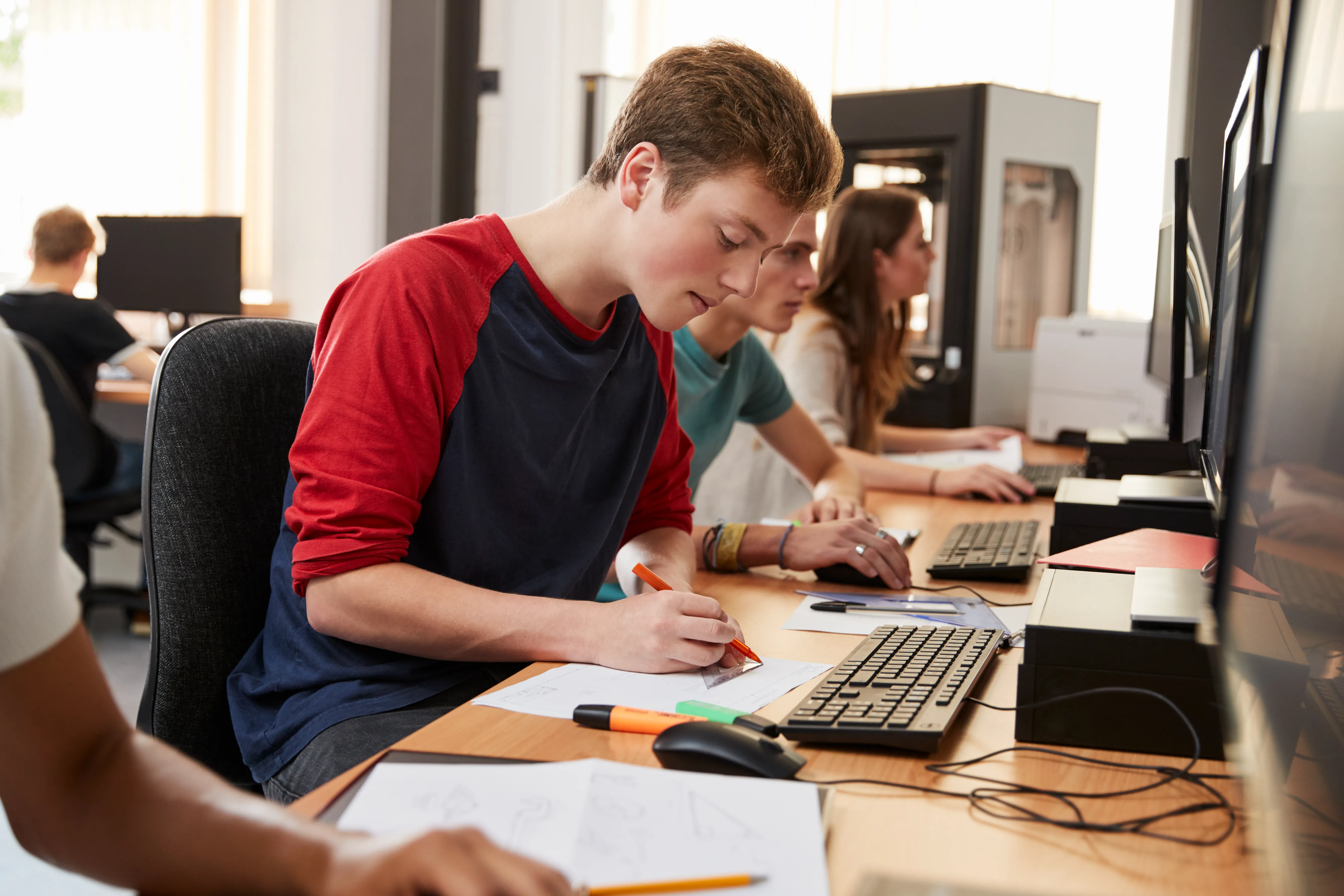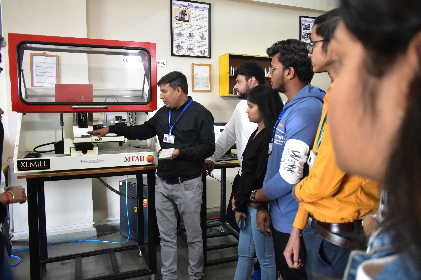Announcement
Get Ready for INDUS CUP 2K26! | Dates: 5–10 January 2026 | Stand a Chance to Win Cash Prizes up to ₹10,00,000!...Read more Get Ready for INDUS CUP 2K26! | Dates: 5–10 January 2026 | Stand a Chance to Win Cash Prizes up to ₹10,00,000!
We are excited to announce the Indus Hackathon 2025, an exhilarating one-day event organized by the CSE Department of Indus University....Read more We are excited to announce the Indus Hackathon 2025, an exhilarating one-day event organized by the CSE Department of Indus University.
26th ISTE Faculty Annual State Convention will be held at Indus University on April 27, 2023....Read more 26th ISTE Faculty Annual State Convention will be held at Indus University on April 27, 2023.
Get Ready for INDUS CUP 2K26! | Dates: 5–10 January 2026 | Stand a Chance to Win Cash Prizes up to ₹10,00,000!...Read more Get Ready for INDUS CUP 2K26! | Dates: 5–10 January 2026 | Stand a Chance to Win Cash Prizes up to ₹10,00,000!
We are excited to announce the Indus Hackathon 2025, an exhilarating one-day event organized by the CSE Department of Indus University....Read more We are excited to announce the Indus Hackathon 2025, an exhilarating one-day event organized by the CSE Department of Indus University.
26th ISTE Faculty Annual State Convention will be held at Indus University on April 27, 2023....Read more 26th ISTE Faculty Annual State Convention will be held at Indus University on April 27, 2023.


The Mechanical Engineering Department offers a two-year postgraduate program specializing in Computer-Aided Design and Computer-Aided Manufacturing (M.Tech CAD/CAM), also known as Master of Engineering (M.E).
As the top Mechanical Engineering Department in Ahmedabad (Gujarat), the Department has highly skilled and experienced faculty members specializing in advanced fields.
The course M.Tech Computer-Aided Design and Manufacturing from Indus Institute of Technology and Engineering content is structured so that all critical concepts from these courses are reintroduced where necessary, including a lecture series that explores the fundamentals of solid mechanics and materials. The course set combines preliminary and subsequent courses like Design and Construction.
25% of the sanctioned strength of Management & NRI quota will be filled up based on merit as per the eligibility criteria decided by AICTE & Gujarat State Government and procedure laid down by ACPC.
Eligibility
The eligibility criteria are a minimum of 50% marks in B.E./B.Tech with the qualifying GATE Score or State level entrance exam for M.E./M.Tech
Course Duration
2 Years (4 Semesters)
Intake
18 Seats
CAD/CAM is designed to combine the basics learned in an application. This course builds on and applies knowledge from subsequent classes.
The lectures provide an overview of material science, mechanics, stresses, design of machine elements, failure theories and conceptual design and visualization techniques, which mainly include teamwork in computer laboratories to carry out various projects: CAD, FEM, CAE and RP.
In addition, students learn CAM principles and participate in CNC demonstrations. Students work in teams to design, analyze and manufacture the parts needed to create a prototype assembly as a final design or to reverse engineer and reproduce an existing assembly.
Lectures between laboratory sessions introduce concepts needed in computational projects, including technical drawing and the finite element method. Emphasis is on validating FEM results using analytical theory. SolidWorks is used in all computer lab sessions.
Laboratory for Computer-Aided Design
The Computer-Aided Design (CAD) Lab in the Mechanical Engineering Department is well-equipped with computers, 28 individual workstations, and the most cutting-edge Indus University technology. Modern hardware and software-supported high-end terminals. CAD lab computers are set up with programmes like AutoCAD, Inventor, ANSYS, etc.
Students receive expert instruction in the CAD lab utilizing the most recent AutoCAD software for 2D drafting and 3D modelling of mechanical engineering graphics. Students will get knowledge of 3D solid modelling definition and computer-aided design layout as well software based simulation like FEM, CFD etc. Additionally, students will pick up the design and drafting skills necessary for mechanical engineering.
Laboratory for Computer-Integrated Manufacturing
Industrial robots are used to control pneumatically computerized numerical control devices in the CIM & Robotics laboratory. This lab's goal is to acquaint students with CNC codes so they can do automated turning and milling tasks.
Laboratory for Material Strength
Students are meant to become familiar with the various material impacts through the Strength of Material Laboratory. By studying the engineering impacts of materials and examining solids and structures, it is possible to gain a basic understanding of the notions of stress and strain.
Explore the exciting world of design with our M.Tech in Computer-Aided Design and Manufacturing course! Made for those with a passion for innovation, this program blends creativity with technical skills. Learn the ins and outs of computer-aided design (CAD), mastering advanced software to bring your ideas to life. The course covers everything from engineering components to architectural marvels, equipping you with the skills needed to excel in a competitive industry. With hands-on projects and expert guidance,students will gain practical experience.
Explore the exciting design world with our M.Tech in Computer-Aided Design(CAD) and Manufacturing course! Made for those having a passion about innovation, this program blends with creativity and technical skills. Learn the technicalities of computer-aided design (CAD), mastering advanced software to bring your ideas to life hassle-free. The course offers everything from engineering components, architectural elements and equipping you with the skills needed to excel in the competitive industry. Students will gain practical experience with hands-on projects and expert guidance.
Indus University has an autonomous vertical - Training & Placement Department (T & P Dept.) - that connects two vital ends: education and the industry. It exemplifies a link between schools and university constituent associations (entry-level input) and the sector (output-end at the finishing level).
The Training and Placement Department was established in 2006. It was previously affiliated with the Indus Institute of Technology & Engineering until becoming a part of the Indus University in 2012.
The Training and Placement Department is the hub for career assistance for students from all programmes and streams at the university. It provides students with overall career solutions by encouraging them to choose and pursue their ideal vocations.
25% of the sanctioned strength of Management & NRI quota will be filled up based on merit as per the eligibility criteria decided by AICTE & Gujarat State Government and procedure laid down by ACPC.
Eligibility
The eligibility criteria are a minimum of 50% marks in B.E./B.Tech with the qualifying GATE Score or State level entrance exam for M.E./M.Tech
Course Duration
2 Years (4 Semesters)
Intake
18 Seats
Tuition fees
Rs. 1,26,000 per annum
CAD/CAM is designed to combine the basics learned in an application. This course builds on and applies knowledge from subsequent classes.
The lectures provide an overview of material science, mechanics, stresses, design of machine elements, failure theories and conceptual design and visualization techniques, which mainly include teamwork in computer laboratories to carry out various projects: CAD, FEM, CAE and RP.
In addition, students learn CAM principles and participate in CNC demonstrations. Students work in teams to design, analyze and manufacture the parts needed to create a prototype assembly as a final design or to reverse engineer and reproduce an existing assembly.
Lectures between laboratory sessions introduce concepts needed in computational projects, including technical drawing and the finite element method. Emphasis is on validating FEM results using analytical theory. SolidWorks is used in all computer lab sessions.
Laboratory for Computer-Aided Design
The Computer-Aided Design (CAD) Lab in the Mechanical Engineering Department is well-equipped with computers, 28 individual workstations, and the most cutting-edge Indus University technology. Modern hardware and software-supported high-end terminals. CAD lab computers are set up with programmes like AutoCAD, Inventor, ANSYS, etc.
Students receive expert instruction in the CAD lab utilizing the most recent AutoCAD software for 2D drafting and 3D modelling of mechanical engineering graphics. Students will get knowledge of 3D solid modelling definition and computer-aided design layout as well software based simulation like FEM, CFD etc. Additionally, students will pick up the design and drafting skills necessary for mechanical engineering.
Laboratory for Computer-Integrated Manufacturing
Industrial robots are used to control pneumatically computerized numerical control devices in the CIM & Robotics laboratory. This lab's goal is to acquaint students with CNC codes so they can do automated turning and milling tasks.
Laboratory for Material Strength
Students are meant to become familiar with the various material impacts through the Strength of Material Laboratory. By studying the engineering impacts of materials and examining solids and structures, it is possible to gain a basic understanding of the notions of stress and strain.
Explore the exciting world of design with our M.Tech in Computer-Aided Design and Manufacturing course! Made for those with a passion for innovation, this program blends creativity with technical skills. Learn the ins and outs of computer-aided design (CAD), mastering advanced software to bring your ideas to life. The course covers everything from engineering components to architectural marvels, equipping you with the skills needed to excel in a competitive industry. With hands-on projects and expert guidance,students will gain practical experience.
Explore the exciting design world with our M.Tech in Computer-Aided Design(CAD) and Manufacturing course! Made for those having a passion about innovation, this program blends with creativity and technical skills. Learn the technicalities of computer-aided design (CAD), mastering advanced software to bring your ideas to life hassle-free. The course offers everything from engineering components, architectural elements and equipping you with the skills needed to excel in the competitive industry. Students will gain practical experience with hands-on projects and expert guidance.
Indus University has an autonomous vertical - Training & Placement Department (T & P Dept.) - that connects two vital ends: education and the industry. It exemplifies a link between schools and university constituent associations (entry-level input) and the sector (output-end at the finishing level).
The Training and Placement Department was established in 2006. It was previously affiliated with the Indus Institute of Technology & Engineering until becoming a part of the Indus University in 2012.
The Training and Placement Department is the hub for career assistance for students from all programmes and streams at the university. It provides students with overall career solutions by encouraging them to choose and pursue their ideal vocations.
What is an M.Tech in CAD/CAM about?
The operation, application, and specialization of computer software to produce designs for many sectors are known as CAD/CAM engineering. It aims to develop drafting abilities for electrical structures.
Who Should Choose an M.Tech in CAD/CAM?
Candidates may choose this programme if they want to master the subject at a high level and have a solid understanding of the computer-based drafting, design, simulation, optimization, process planning, manufacturing etc. which are used in product design.
What is the duration of the M.Tech CAD/CAM course?
The 2-year M.Tech CAD/CAM programme is broken into two semesters per year over the course of its four semesters. The effectiveness of applicants is assessed at the conclusion of each semester based on their performance in written exams, seminars, assignments, and project work. In second semester, student chose either Industrial problem or in-house project on which to understand it and then provide necessary solution with due validation for effective implementation for societal/industrial need.